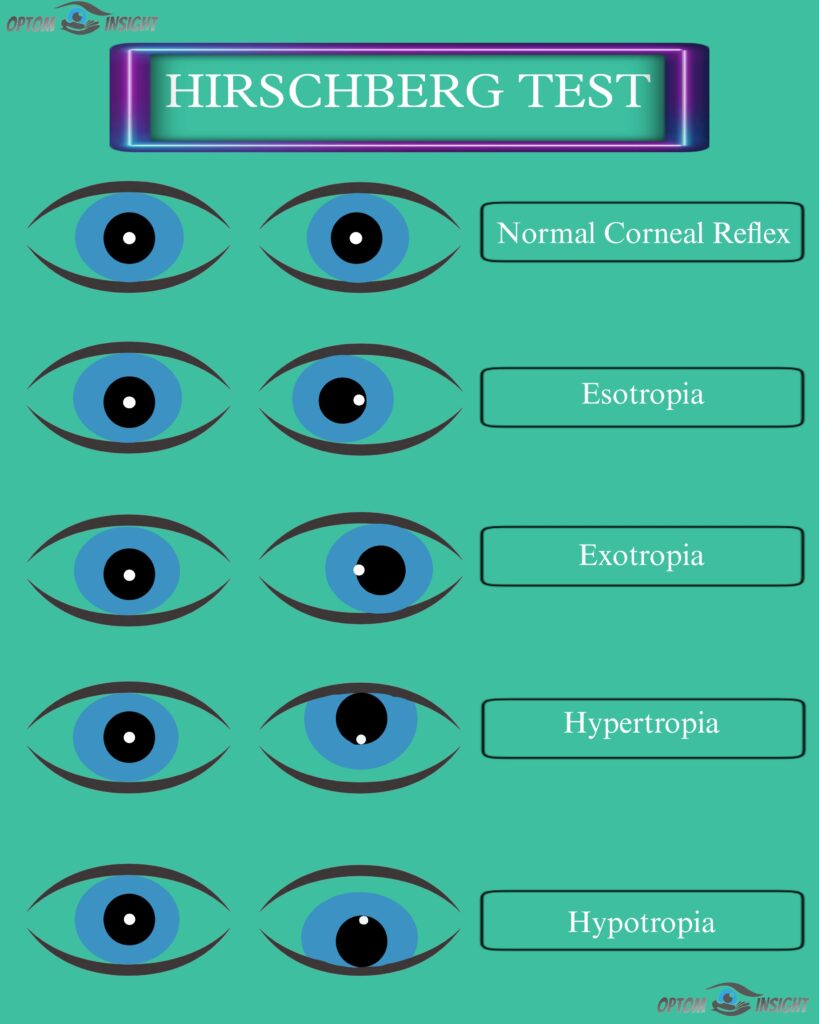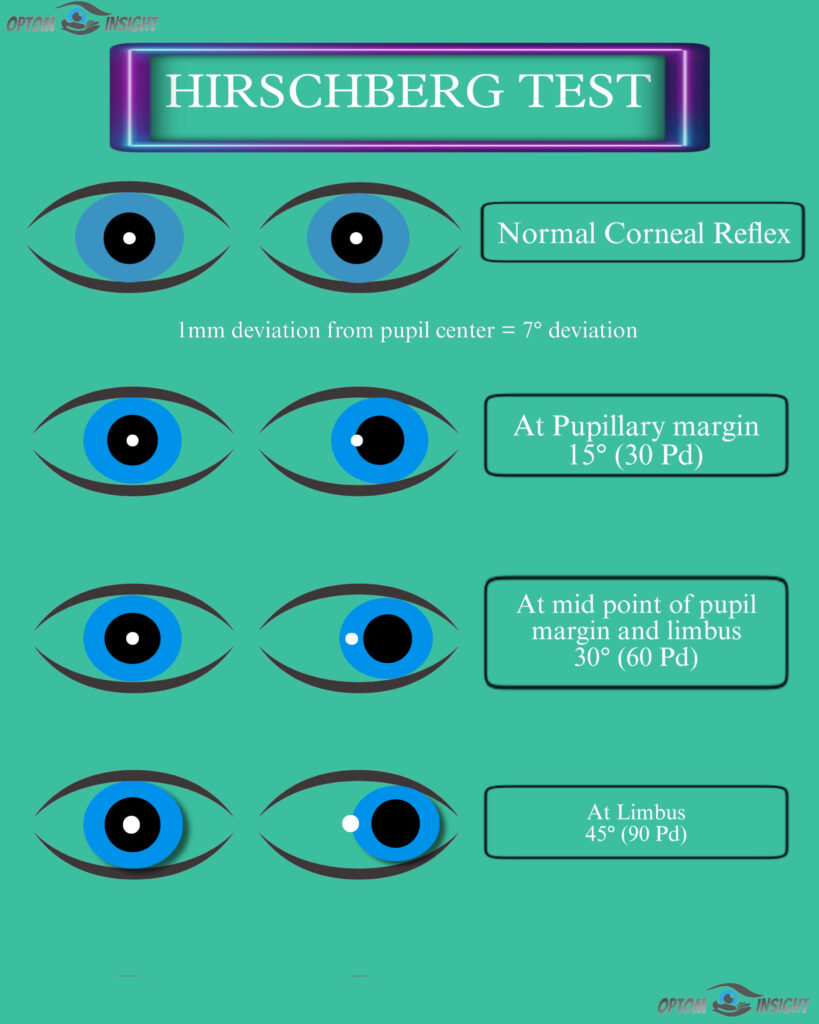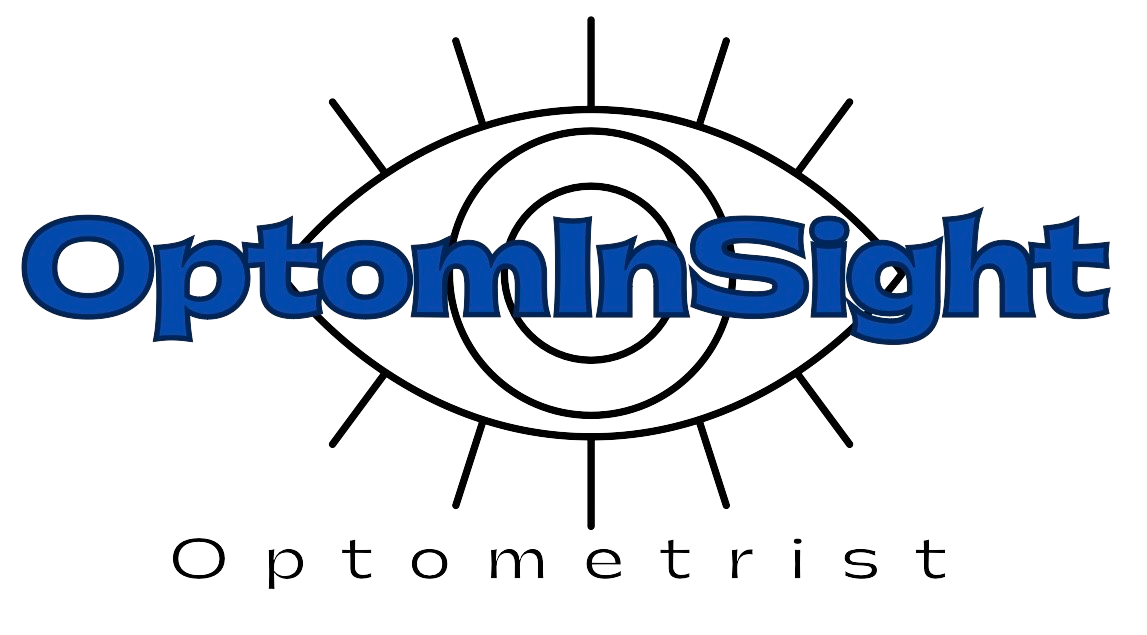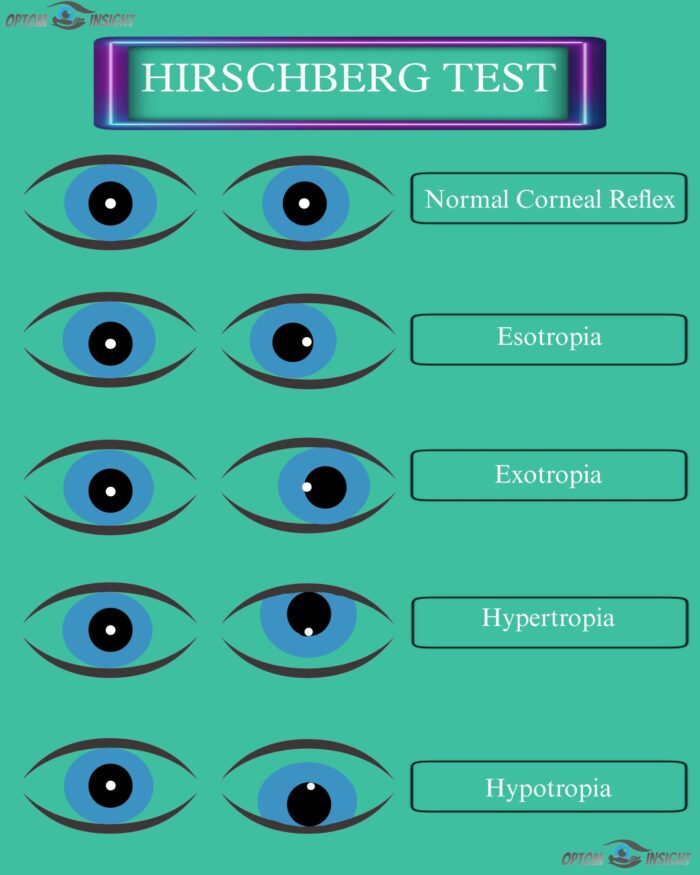The Hirschberg test is a quick and easy objective method for the assessment of ocular alignment. It is also known as the corneal light reflex test as the observation is based on the judgment of the position of the corneal light reflex. This test is very handy in cases where patients are not cooperative such as children, patients who cannot fixate/track well, or when the complete ocular motility assessment is not possible.
Hirschberg test Procedure:
- Hold the source of light such as a pen torch in front of the examiner’s dominant eye and close the non-dominant eye.
- Shine the light from a distance of 2 feet in between the patient’s eye at the midline.
- Observe the position of the corneal light reflex in both eyes. In the case of the normal fixating eyes, it will be located centrally or slightly nasal to the pupil center but will be located somewhere else (depending on the magnitude and direction) in cases of strabismus.
Hirschberg test Interpretation:
The corneal light reflex will be at the pupil center or slightly nasal in normal ocular alignment.
In cases of strabismus,
- Esotropia: Light reflex is shifted outwards.
- Exotropia: Light reflex is shifted inwards.
- Hypotropia: Light reflex is shifted upwards.
- Hypertropia: Light reflex is shifted downwards.

The magnitude of deviation can be measured based on the estimation that, 1mm deviation from the pupil center signifies 7 degrees of deviation. This has been summarized in the picture below.

This also can be measured by placing a prism in front of deviating eye until the reflex is aligned at the center, this test is known as the Krimsky test.
Click below to learn about Krimsky test

